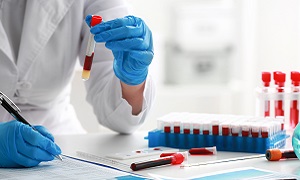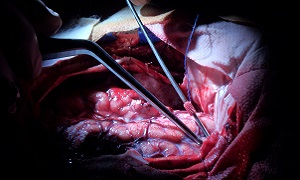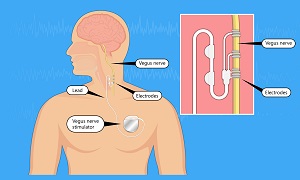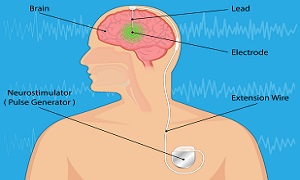Best Doctors in India for Epilepsy Treatment
Best Hospitals in India for Epilepsy Treatment
- City: Bengaluru, India
Hospital Highlights:
- Fortis Hospital Bannerghatta, Bengaluru was established in 2006.
- The hospital is a 276 bedded multi-specialty tertiary care facility.
- The hospital specializes in cutting-edge medical technology and dedicated patient care services.
- The hospital is equipped with state-of-the-art technologies like trans-radial angioplasty, trans-abdominal cardiac surgery, and computerized TKR navigation surgery.
- The hospital provides specialty medical services in cardiology, cardiac surgery, orthopedics, neurology, neuro-surgery, GI, and Minimal Access Surgery (MAS).
- City: Chennai, India
Hospital Highlights:
- Fortis Malar was established in 1992 and was formerly known as Malar Hospital.
- The hospital specializes in cutting-edge medical technology and dedicated patient care services.
- The hospital is multi-specialty, tertiary care facility with 180 beds.
- The hospital offers comprehensive medical care in specialties such as cardiology, cardio-thoracic surgery, neurology, neurosurgery, orthopedics, nephrology, gynecology, gastroenterology, urology, pediatrics, and diabetes.
- City: New Delhi, India
Hospital Highlights:
- Established in 1996, Pushpawati Singhania Research Institute is one of the top hospitals in the NCR region, as well as one of the top facilities in India for gastroenterology. The hospital is one of South Asia’s first institutes in medical and surgical treatment for diseases related to digestion.
- The hospital is equipped with state-of-the art facilities coupled with the latest equipment as well as renowned consultants from various parts of India as well as other parts of the world.
- City: New Delhi, India
Hospital Highlights:
- State-of-the-art technology and devoted healthcare professionals have been brought together under one roof at Venkateshwar Hospital to provide genuine medical care. The hospital’s professionals work together as a team to deliver the best possible treatment to their patients, using the most sophisticated equipment and information technology.
- Venkateshwar Hospital’s mission is to attain global excellence in healthcare by employing evidence-based, ethical clinical practices and cutting-edge technology by a team of highly skilled experts.
- City: New Delhi, India
Hospital Highlights:
- Sir Ganga Ram Hospital, New Delhi is known to provide the latest medical procedures with the latest technology in all of its units.
- The hospital has a team of reputed doctors, nurses, and healthcare professionals that ensure that patients receive quality care at affordable costs.
- Staffed with a team of highly qualified doctors, dedicated nurses, and paramedical and non-medical staff, the hospital aims to lead in healthcare delivery, medical education, training, and research.
- As per the vision of the founder, the hospital also provides free treatment to the economically weaker sections of society.
- Sir Ganga Ram Hospital also provides training to young doctors under the Diplomate in National Board(DNB) program. The DNB program at the hospital was started in 1984 and it is known for currently running the maximum number of DNB specialties in the country. It also has the distinction of having the first bone bank in India.
- City: Kerala, India
Hospital Highlights:
- Established in 2019, Apollo Adlux Hospital is the first Apollo Hospital in Kerala and the 73rd hospital owned by Apollo Group in India. With the state’s most advanced, comprehensive healthcare infrastructure and cutting-edge technologies, Apollo Adlux Hospital stands as an example of medical excellence in Kerala.
- With over 34 multi-specialty departments, the hospital believes in providing the best quality treatment to its patients at affordable rates, ensuring comfort at their difficult times.
- The 300-bed hospital is managed by a team of highly qualified and experienced experts who delivers exceptional hospitality to their patients and treats them with great compassion.
- With its affiliation with the Apollo Hospitals Group, the hospital aims in providing patients with top-notch healthcare services while also serving communities in Kerala.
- The hospital has good railway and road connections, and is conveniently close to Cochin International Airport.
- City: Gurugram, India
Hospital Highlights:
- Situated near DLF Cyber City, Gurugram, Narayana Superspecialty Hospital is one of the top medical facilities in the Delhi NCR region, catering to the needs of the people. Known for its commitment to quality medical care and patient service, the hospital is a state-of-the-art facility with planned and well-equipped sections, which includes a spacious OPD area as well as comfortable patient rooms.
- It is the closest super-specialty hospital from Indira Gandhi International Airport towards Gurugram, and also the nearest super specialty hospital from DLF Cyber City. It is also close to major residential areas in Gurugram.
- It is part of the renowned Narayana Health Group. Established in 2000, by Dr. Devi Shetty, a renowned cardiac surgeon, it has grown to be one fo India’s leading healthcare groups.
- City: Noida, India
Hospital Highlights:
- Fortis Hospital, Noida, stands as one of the oldest and most trusted healthcare institutions in the region, setting a benchmark for comprehensive medical care.
- As the second mega hub hospital in the Fortis Healthcare Group, Fortis Hospital, Noida, upholds a legacy of trust among more than 1.2 million patients. By integrating top-tier professionals with cutting-edge technology, the hospital delivers superior treatment across various medical disciplines.
- Specializing in advanced Neurosciences, Orthopedics, Kidney and Liver Transplant Programmes, Fortis Hospital, Noida has successfully performed over 1,500 transplants, solidifying its reputation as a leader in specialized medical interventions.
What is Epilepsy?
Epilepsy is a disorder of central nervous system or a neurological disorder characterised by abnormal brain activity that leads to seizures and sometimes loss of awareness.
Causes & risk factors of Epilepsy
- Head trauma or sudden blow to the head.
- Brain tumours or brain stroke.
- Infectious diseases like meningitis, AIDS and viral encephalitis.
- Injuries before birth or prenatal injury.
- Having family history of Epilepsy.
- Dementia can increase the risk of epilepsy in older adults.
Symptoms of Epilepsy
- Temporary confusion
- A brief seizure, usually less than 15 seconds, also known as staring spell.
- Uncontrollable & jerking movements of the arms and legs.
- Loss of awareness.
- Fear, anxiety
Types of Seizures
Doctors generally classify seizures either focal or generalized, based on how the abnormal brain activity begins.
Focal Seizures
Focal Seizures occur when there abnormal activity in just one area of brain.
These seizures are of two types:
- Focal seizures without loss of consciousness – They may change the way things look, smell, feel, taste or sound & may also result in involuntary jerking of a body part, such as an arm or leg but don’t cause a loss of consciousness. They were once called simple partial seizures.
- Focal seizures with impaired awareness – These seizures involve a change or loss of consciousness or awareness. & were once called complex partial seizures.
Generalized seizures
Generalized seizures involve all areas of the brain.
Types of Generalized seizures.
- Absence seizures also known as petit mal seizures – They usually occur in children and involve subtle body movements such as eye blinking or lip smacking.
- Tonic seizures – These usually affect muscles in your back, arms and legs.
- Atonic seizures – Also known as drop seizures, atonic seizures can cause a loss of muscle control, which may cause sudden collapse.
- Clonic seizures – Clonic seizures involve repeated or rhythmic, jerking muscle movements.
- Myoclonic seizures – These usually involve sudden brief jerks.
- Tonic-clonic seizures – These were previously known as grand mal seizures, can cause an abrupt loss of consciousness, body stiffening and shaking, and sometimes loss of bladder control or biting the tongue
Diagnosis of Epilepsy
Neurological exam
Blood tests
Electroencephalogram (EEG)
CT scan
MRI
SPECT
Treatment of Epilepsy
Medicines
Surgeries
When medications fail to provide adequate control over seizures, surgery may be an option. Surgery is generally considered when:
- Seizures originate in a small and well-defined region of the brain
- The said area doesn’t control any vital function of the body like vision, hearing, speech etc.
The surgical options for the treatment of Epilepsy are as follows:
Resective surgery
Resective surgery is the most common surgery used for the treatment of Epilepsy. This surgery involves removal of brain tissues in the area of the brain where seizures originate.
Corpus Callostomy
Corpus callosotomy is the surgery of bundle of nerves that connects the right and left sides of the brain & is usually used in children.
Hemispherectomy
Hemispherectomy involves removal of one side (hemisphere) of the folded gray matter of the brain.
Functional Hemispherectomy
Functional hemispherectomy, is primarily used in children & involves the undercutting of the seizure-inducing hemisphere.
Therapies
Apart from medications and surgery, the following therapies can offer an alternative for treating epilepsy.
















